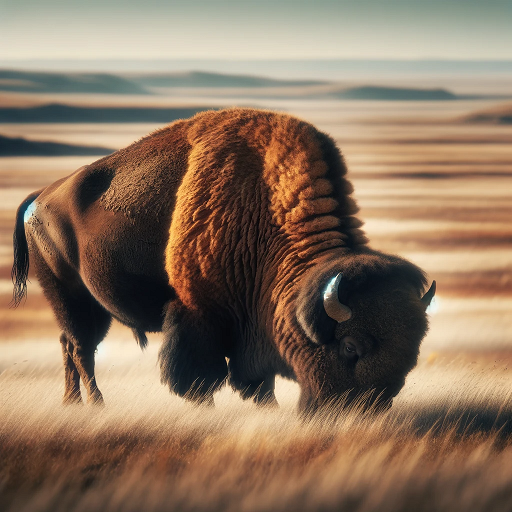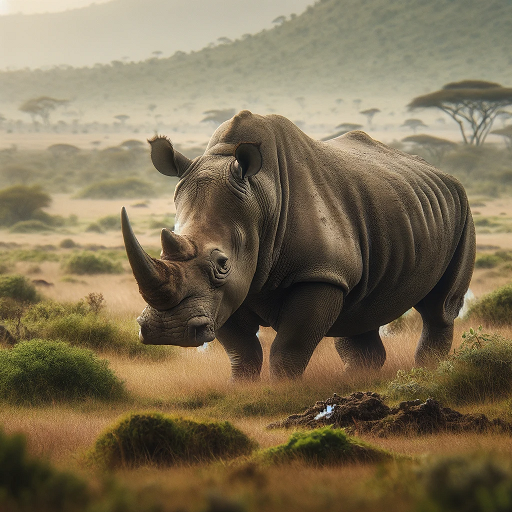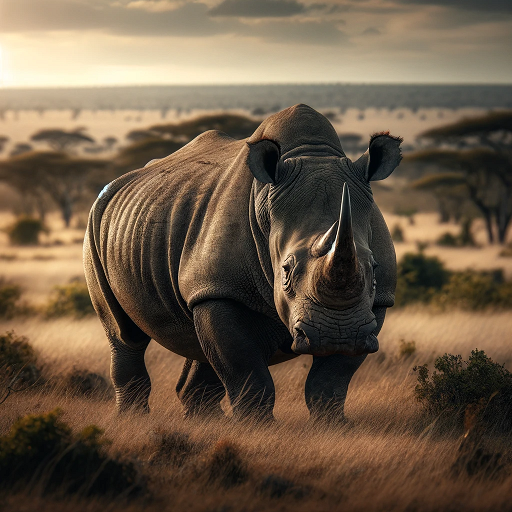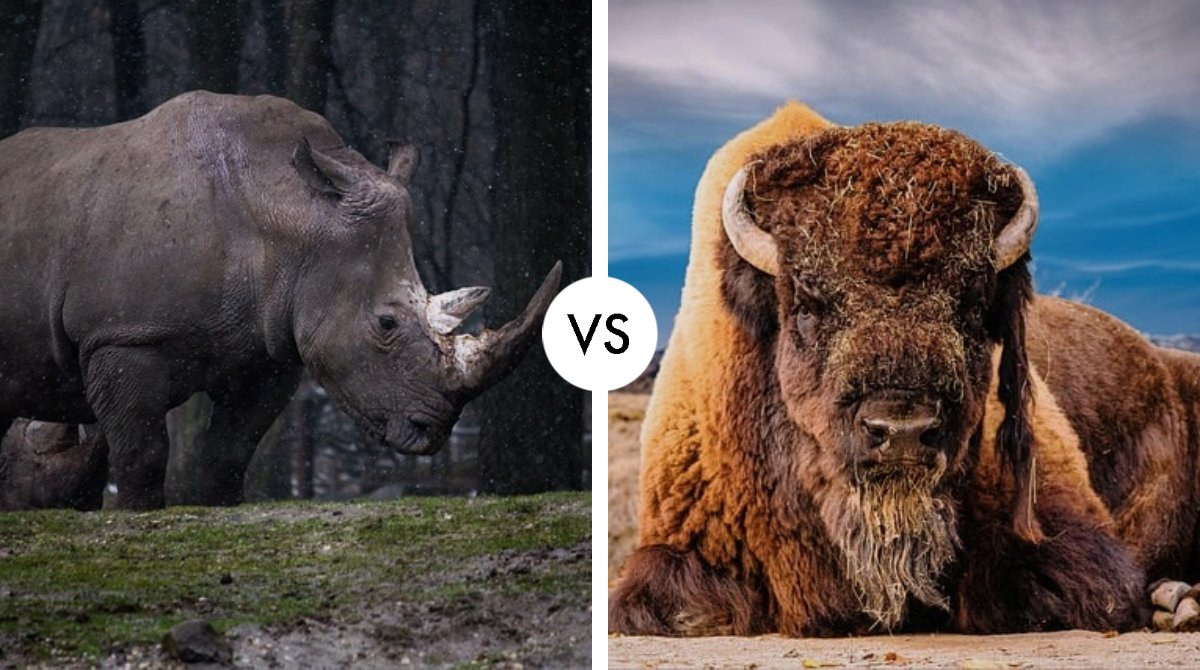G’day, wildlife enthusiasts! Today, we’re pitting two of the biggest and baddest herbivores against each other – the rhinoceros and the bison. These are two of the most powerful land animals in the world, but which one would come out on top in a one-on-one fight? Let’s take a closer look!
Size and Strength
First up, let’s compare the sizes of these two beasts. Rhinos can weigh up to 2,300 kg and stand up to 1.85 meters tall, while bison can weigh up to 1,000 kg and stand up to 1.8 meters tall. In terms of raw strength, the rhino has a clear advantage, with a massive muscular body and a large horn on its nose that it can use as a weapon.


Habitat and Adaptation
The rhinoceros and bison inhabit vastly different ecosystems, which have shaped their unique adaptations. Rhinos are primarily found in Africa and Asia, thriving in savannas, grasslands, and tropical forests. Their thick skin is well-suited for the harsh sunlight and rough vegetation of these areas. In contrast, bison are predominantly found in North America, roaming grasslands and prairies. Their thick fur coats protect them from harsh winters, making them well-adapted to a variety of climates, from hot summers to freezing winters.
Fighting Experience and Technique
Next, let’s talk about fighting experience and technique. Rhinos are known to be aggressive and will charge anything that they perceive as a threat. They are also known to use their horns as weapons, which can easily gore another animal. On the other hand, bison are not as aggressive, but they are known to be stubborn and can be provoked if threatened. They have sharp horns that they can use to defend themselves, but they mainly rely on their brute strength to overpower an opponent.
Aggressiveness and Temperament
In terms of aggressiveness and temperament, the rhino is definitely the more aggressive of the two. Rhinos are notoriously territorial and will defend their turf fiercely. They are known to charge at anything that they perceive as a threat, including other animals and even vehicles. On the other hand, bison are generally more docile, but they can be unpredictable and will attack if they feel threatened.


Speed and Agility
When it comes to speed and agility, the bison has the advantage. Bison are surprisingly fast and can run up to 60 km/h. They are also surprisingly agile and can quickly change direction to avoid danger. Rhinos, on the other hand, are quite slow and are not very agile. They are more suited to charging in a straight line than dodging and weaving.
Endurance and Stamina
In terms of endurance and stamina, the bison has the edge. Bison are able to run for longer distances and can maintain their speed for longer periods of time than rhinos. Rhinos, on the other hand, are built for short bursts of speed and power and tire quickly.
Weapons or Defensive Mechanisms
Both rhinos and bison have their own unique weapons and defensive mechanisms. Rhinos have their massive horns, which they can use to gore their opponents. They also have thick skin that is difficult to penetrate, which makes them a tough target. Bison, on the other hand, have sharp horns that they can use to defend themselves. They also have a thick fur coat that can provide some protection against attacks.

Ability to Finish Opponent
Both rhinos and bison have the ability to finish off their opponents. Rhinos can use their powerful horn to gore an opponent and cause severe injuries. Bison can use their sharp horns to inflict wounds and their powerful hooves to deliver crushing blows.
So, who would win in a one-on-one fight between a rhino and a bison? Well, it’s a tough call, but if I had to pick, I’d give the edge to the rhino. With its massive size, raw strength, and deadly horn, the rhino is a formidable opponent.
Conservation and Ecosystem Roles
Conservation status is a critical aspect of both species. Rhinos are among the most endangered species on the planet, primarily due to poaching and habitat loss. Efforts to protect them are crucial for their survival. Rhinos play a significant role in their ecosystems by helping to shape the African landscape; their grazing habits can significantly influence the vegetation structure. On the other hand, bison, once on the brink of extinction due to overhunting, have made a remarkable comeback through conservation efforts. They are considered a keystone species in their habitat, as their grazing patterns help maintain the grassland ecosystem, benefiting a wide range of other species.
To delve deeper into the world of powerful herbivores and their dynamics, don’t miss our exploration of Elephant vs Rhino: Who Will Come Out on Top? where we examine the strengths and weaknesses of these mighty beasts. Additionally, for an intriguing look at how different species interact in the wild, our feature Lion vs Rhino: Who Would Win? provides an intriguing scenario of a hypothetical face-off between a top predator and a formidable herbivore.”




